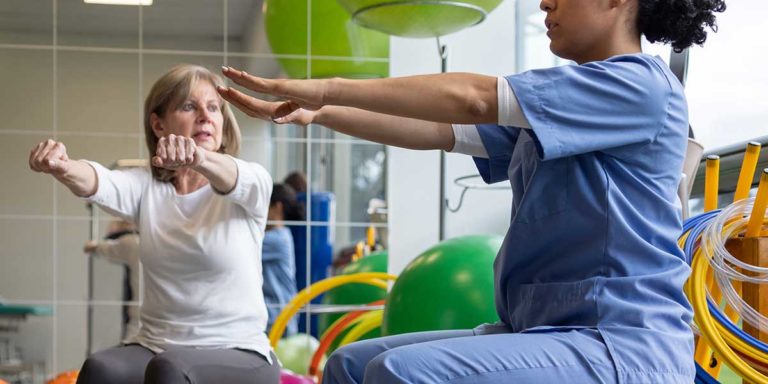Physical Therapy for Posture Correction and Alignment
In today’s fast-paced world, where technology and sedentary lifestyles dominate, maintaining good posture and alignment has become increasingly challenging. Poor posture not only affects our physical health but can also impact our confidence and overall well-being. Fortunately, physical therapy offers effective solutions for correcting posture and alignment issues, helping individuals lead healthier and more comfortable lives.
Understanding the Importance of Good Posture
Before delving into physical therapy techniques for posture correction, it’s essential to grasp the significance of maintaining good posture. Posture refers to the position in which we hold our bodies while standing, sitting, or lying down. Proper posture ensures that the bones, muscles, and ligaments are aligned correctly, reducing the strain on various body parts and minimizing the risk of injuries and chronic pain.
When we have good posture, the body’s weight is distributed evenly, enabling muscles to work more efficiently. In contrast, poor posture, characterized by slouching, rounded shoulders, or a forward head position, can lead to muscle imbalances, joint issues, and spine misalignments over time.
The Role of Physical Therapy in Posture Correction and Alignment
Physical therapists are trained professionals who specialize in restoring and improving musculoskeletal health. They play a pivotal role in helping individuals achieve better posture and alignment through targeted exercises, education, and personalized treatment plans.
Posture Assessment
The first step in physical therapy for posture correction is a comprehensive posture assessment. During this evaluation, the physical therapist will observe and analyze the individual’s posture, identifying any deviations or imbalances.
They may also take measurements and use specialized tools to assess the spine’s alignment and curvature.
Customized Exercise Regimens
Based on the assessment results, the physical therapist will create a personalized exercise regimen to address the individual’s specific posture issues. These exercises may focus on strengthening weak muscles, stretching tight areas, and promoting overall body awareness.
For example, exercises that target the core muscles can help stabilize the spine and support better posture. Additionally, exercises to open up the chest and shoulders can counteract the effects of hunching over electronic devices for extended periods.
Ergonomic Guidance
Physical therapists not only focus on exercises but also provide ergonomic guidance to help individuals maintain better posture in their daily activities. They may advise on proper workstation setup, recommend supportive chairs, and suggest adjustments to computer screen height to reduce strain on the neck and shoulders.
Manual Therapy Techniques
In some cases, manual therapy techniques may be incorporated into the treatment plan to facilitate posture correction. These techniques may include joint mobilization, soft tissue mobilization, and myofascial release to improve joint mobility and reduce muscle tension.
Posture Correction Outside the Clinic
Physical therapy is not confined to the clinic; it encourages individuals to carry over posture correction practices into their daily lives. This can include adopting conscious habits such as standing up and moving regularly during prolonged sitting, maintaining a neutral spine while lifting objects, and practicing good posture during activities like walking and running.
Benefits of Physical Therapy for Posture Correction
Engaging in physical therapy for posture correction and alignment offers numerous benefits beyond merely correcting slouched shoulders or a rounded back. Some of the key advantages include:
- Pain Relief: Improved posture can alleviate chronic pain in the neck, shoulders, and back caused by poor alignment and muscle imbalances.
- Enhanced Functionality: Better posture enables the body to move more efficiently, enhancing overall physical performance and reducing the risk of injury during physical activities.
- Improved Breathing and Circulation: Proper alignment allows for better lung expansion, leading to improved oxygen intake and circulation throughout the body.
- Increased Confidence: Correcting posture can boost self-esteem and confidence, as individuals stand and move with a more poised and confident demeanor.
Physical therapy serves as a valuable tool in correcting posture and alignment issues. Through personalized exercise regimens, ergonomic guidance, and manual therapy techniques, physical therapists can help individuals improve their posture, alleviate pain, and achieve better musculoskeletal health. By embracing the guidance provided by these experts and integrating good posture practices into our daily lives, we can promote overall well-being and lead healthier, more comfortable lives in our modern, technology-driven world.
Your path to greater potential starts here. Explore the comprehensive therapeutic services of TPI Therapeutic Potential, Inc. in Southwest Florida. Contact us today and embark on a journey to wellness.”







